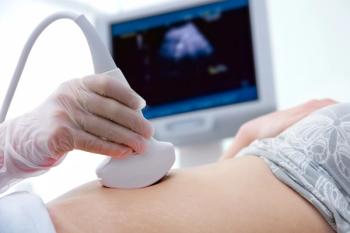Key takeaways:
- Every 1 % rise in a state’s firearm‑ownership rate was associated with a 6 % increase in all‑cause pregnancy‑associated homicide and an 8 % increase in firearm‑specific homicide.
- Pregnant women experienced an all‑cause homicide rate of 49.16 per 1 million live births, compared with 39.05 per 1 million for non‑pregnant women of reproductive age.
- 78.6 % of homicides among pregnant women involved firearms (versus 72.2 % for non‑pregnant women), and in 29 of the 33 states examined, over half of pregnancy‑associated deaths were firearm‑related.
- After adjusting for sex, age, poverty, insurance coverage, unemployment, and population density, firearm ownership was the only state‑level factor significantly linked to pregnancy‑associated homicide.
- The findings underscore the need for immediate, multi‑sector policies targeting firearm access, public‑health outreach, and health‑system interventions.
There is a significant link between state-level firearm ownership and homicide among pregnant women, according to a recent study published in JAMA Network Open.1
Significant rates of maternal morbidity and mortality have been reported in the United States, alongside great racial and ethnic disparities. Increasing rates of homicide have also been reported among pregnant and postpartum women, and state-level firearm ownership has been linked to increased rates of firearm death.
“Less is understood about the association between state-level firearm ownership and pregnancy-associated firearm homicide rates specifically,” wrote investigators.
Assessing pregnancy-related homicides
The retrospective cross-sectional study was conducted to assess the association between state-level firearm ownership and pregnancy-associated homicide. Demographic, incident, and suspect data recorded in the National Violent Death Reporting System between January 1, 2018, and December 31, 2021, were included in the analysis.
The CDC’s Web-based Injury Statistics and Query Reporting System was analyzed to determine state-level firearm suicide and total suicides, which were used to measure firearm ownership. This database was also assessed for homicides in nonpregnant women aged 15 to 49 years.
Participants included female homicide decedents aged 15 to 49 years, classified as either pregnant or nonpregnant in the prior year. All-cause and firearm-specific homicide rates on a statewide level were reported per 1,000,000 livebirths for pregnant women and per 1,000,000 reproductive-aged women for nonpregnant women as the primary outcome.
State-level sex, age, poverty, insurance, unemployment, and population density were reported as covariates. This allowed sociodemographic differences to be reported across states.
Homicide rates
There were 7063 homicides among women aged 15 to 49 years reported between 2018 and 2021. These women were aged a mean of 30 years, and 2.2% were American Indian or Alaska Native, 1.6% Asian or Pacific Islander, 46.4% Black, 36.3% White, 1.7 another race or ethnicity, and 0.4% of unknown race or ethnicity.
Of homicides, 6.1% were reported among pregnant women and 93.9% among nonpregnant women. The greatest rates by age group were 32.5% in pregnant women aged 20 to 24 years and 18.5% in nonpregnant women aged 25 to 29 years. Firearms were involved in the homicide of 78.6% of pregnant women and 72.2% of nonpregnant women.
A greater all-cause pregnancy-associated homicide rate was reported vs the rate among nonpregnant women, at 49.16 per 1,000,000 live births and 39.05 per 1,000,000 women, respectively. For firearm-specific homicides, these rates were 38.63 and 28.20 per 1,000,000, respectively.
Firearms as a common source
Over 50% of pregnancy-associated deaths were linked to firearms in 29 of 33 states evaluated. Additionally, a 6% rise in pregnancy-associated all-cause homicide was reported for every 1% increase in state-level firearm ownership, alongside an 8% increase in firearm homicide.
There were no other state-level variables significantly linked to pregnancy-associated homicide. Overall, the results indicated increased risk of firearm homicide among pregnant women, alongside a link between state-level firearm ownership with firearm homicide rates among this population.
“Preventing homicide during pregnancy will require urgent and coordinated actions from policymakers, public health advocates, and health care systems to address this leading cause of death in pregnant women,” wrote investigators.
Broader need for interventions
A prior study published in JAMA Network Open has highlighted the need for state-specific intervention strategies to address preventable sources of death.2 CDC data indicated 10,715 mortalities between 2018 and 2022 among women who were pregnant or in the first year postpartum.
Suicide and homicide were indicated as the leading causes of maternal death in the United States, with the most significant rate of 12.86 per 100,000 live births reported in Mississippi. Overall, 11% of maternal deaths were linked to homicide or suicide, highlighting the need for research to address structural and policy-level causes of these mortalities.
References
- Dholakia A, Monuteaux MC, D’Ambrosi G, McLone SG, Fleegler E, Lee LK. Firearm homicide in pregnant women and state-level firearm ownership. JAMA Netw Open. 2025;8(11):e2542447. doi:10.1001/jamanetworkopen.2025.42447
- Krewson C. Variations reported in state-level maternal death causes. Contemporary OB/GYN. February 11, 2025. Accessed November 18, 2025. https://www.contemporaryobgyn.net/view/variations-reported-in-state-level-maternal-death-causes.
















